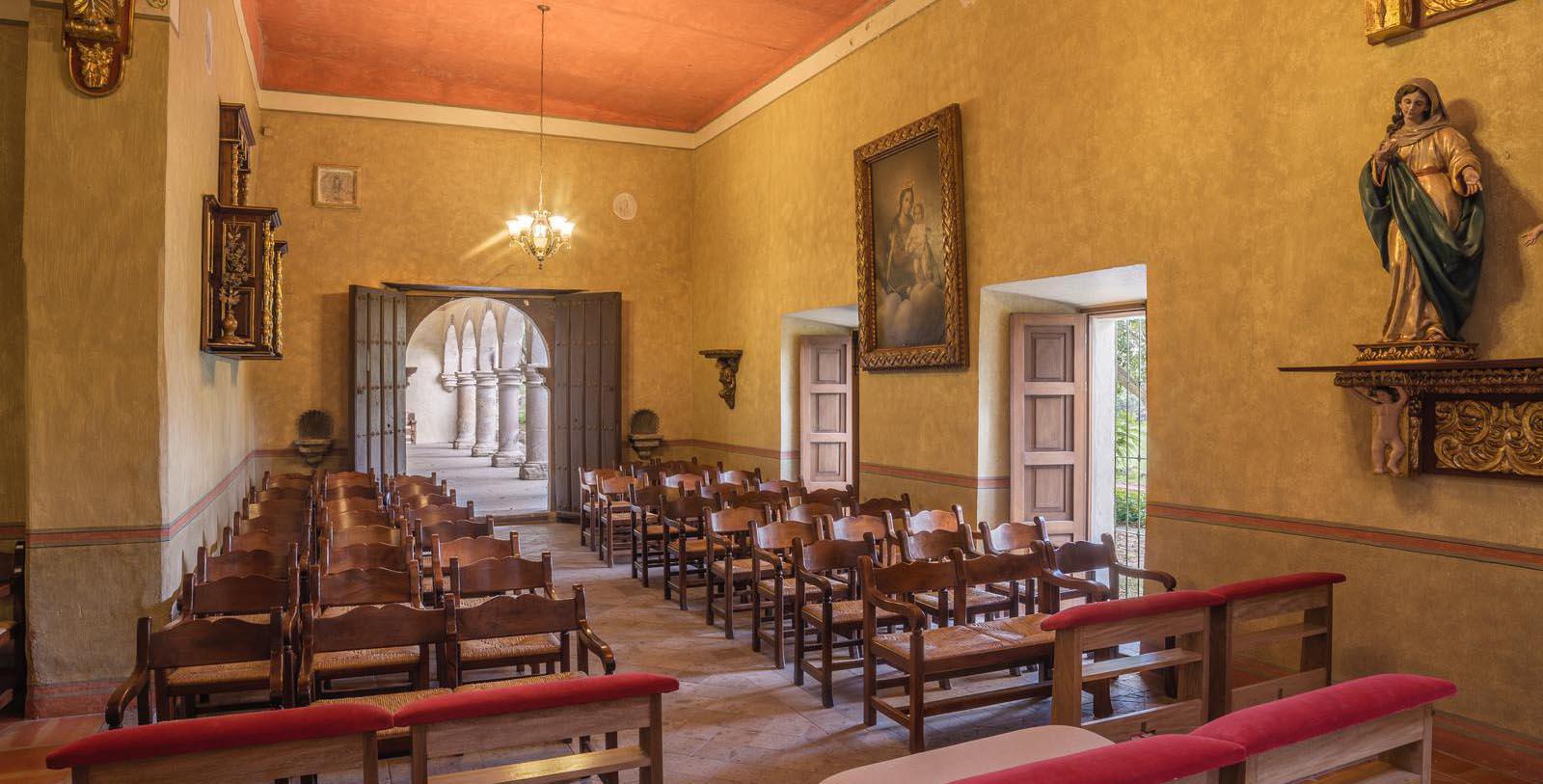Receive for Free - Discover & Explore eNewsletter monthly with advance notice of special offers, packages, and insider savings from 10% - 30% off Best Available Rates at selected hotels.
history
Discover Hacienda Labor de Rivera, which was once a self-sufficient colonial estate that dated back to the 16th century.
Hacienda Labor de Rivera was constructed between the 14th and 17th centuries, in which novel approaches to art and science spread throughout Europe.
One of the most important families the played a key role in the history of Hacienda Labor de Rivera was the Colio family. This family’s dedicated service began in 1566 and ended approximately a century later. They built the walls of the great house, and constructed many of its surrounding buildings. All this was a joint family effort, and Don Diego de Colio III, as well as his successors, benefited from it. During this time, Hacienda Labor de Rivera was known as “La Labor de María de Colio” in honor of Don Diego’s eldest daughter, Maria. It is known that Maria grew up in the great house and actively participated in livestock keeping. Maria had a son from her first marriage, Don Diego de Aguilar. Thanks to his priestly vocation, religious inclination spread amongst the hacienda’s staff. This even gave direct reference to the hacienda’s posthumous owners, who were the source of inspiration for the 10th of September to be celebrated as the Day of Saint Nicolas. This festivity sprung from known devotion to Saint Agustino Nicolas de Tolentino, and was established as a day of reverence just as Maria de Guerra—the daughter of Diego de Aguilar’s stepbrother—had wished. It is likely the hacienda’s chapel was built around the last quarter of the 16th century.
The Colio's lineage ceased to be once Pedro de Rea, Francisco Guerra de Colio’s son-in-law, passed the hacienda on to his children from a second union. His daughter, Maria de la Rea, wed Nicolas de Rivera. The latter named himself sole proprietor of the hacienda for a time, and the location was probably given the name “Nicolas de Rivera” during this period. These were not prosperous years, however. The issues with Nicolas de Rivera’s self-appointment as owner were not the only problem. There were unquestionably other proclamations of ownership by the people of Tepechitlán that failed to be resolved promptly. Due to financial instability, it was auctioned by a brother of Maria de la Rea, and went through a period of financial insolvency that lasted over 70 years.
A new phase of prosperity foruntately came with the purchase of La Labor by Nicolas de Siordia in 1742. Don Nicolas’ sons were great administrators with José Luis and Leandro enhancing the hacienda considerably. It can be established that the last of the Siordias to run the hacienda was José Luis Siordia’s son. It became known as “La Labor de Siordia” during this productive time. The Siordia bloodline came to an end at the hacienda with the death of Don José and his children. The latter managed it successfully for several decades, but then came a historical gap which, to this day, historians have been unable to fill. This could perhaps be explained by the Independence War that began in 1810, when the hacienda might have been taken over by insurgents.
The Camarena family gained control of the location after Dolores Camarena's husbands death in 1837. She became the administrator of the hacienda, alongside her brother, Don Jesus Camarena. A new financial consolidation was achieved due to the partnership signed between Jose Ramon Anastasio (Anastasio) and Jose Ignacio de Santa Vitalia (Vidal Gomez) (children of Dolores Camarena). Both were magnificent strategists in terms of management. They increased hacienda activities greatly by setting up a tavern and mill. They also planted and stored maize, barley, beans, chickpeas, and wheat. Distilling, as well as raising cattle and small livestock, also came into play. But the partnership eventually dissolved in 1879. Years later, with Vidal Gomez’s passing, the handling of the estate passed on to his uncle, Jesus Camarena. Sadly, the latter was faced with problems involving land tenure and the hacienda faced near extinction during the mid-1930s.
Once 90% of the territory had been distributed during this time, ex-military official, Eliodoro Rubalcaba, came on to the scene. He was passing through and opted to take advantage of the social situation by making himself 10% owner of the Labor de Rivera. He based this decision on none other than the current law. According to locals, this period can be considered a time of excessive authoritarianism. The inhabitants of the land now known as “La Mora” or “Lucio Blanco” were stripped of their territory after a constant struggle against the Major. Eventually, the latter left all his possessions to his daughter, Miss Sarita Rubalcaba. Shortly thereafter, the Luque family bought the location. The family has been working on its full restoration since acquisition. Today, they run the site as a luxury boutique resort, and take great care to preserve Hacienda La Labor de Rivera’s captivating history.
-
About the Location +
Hacienda Labor de Rivera resides within the historic town of Tepechitlán, known today as Teuchitlán. Its land became known for its agricultural activity that dated back to colonial times. Its first crops were corn and wheat, as well as beans, chickpeas, and other legumes. Over time, activities increased to include fattening of major and minor livestock, agave cultivation, the processing for both Tequila and Mescal sales, sugarcane cultivation, and metalworking with metals such as silver. The territory contained “San Nicholas" and also included the “San Isidro" estate. Together, they held 33 stables, although it could have been more depending on variations within the equivalence tables. The definitive separation between the territories did not happen until 1805.


























